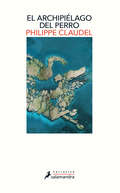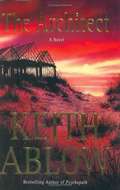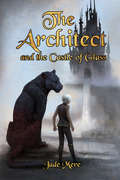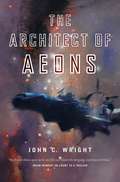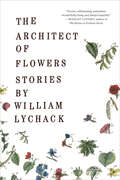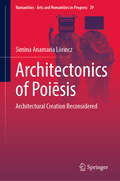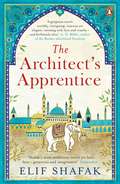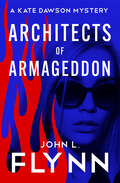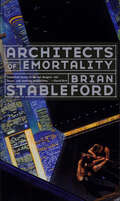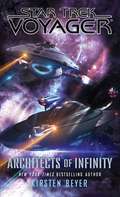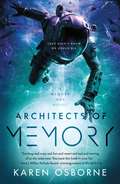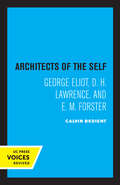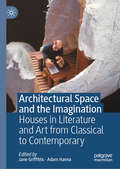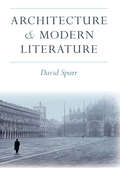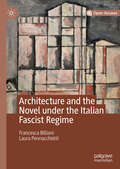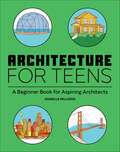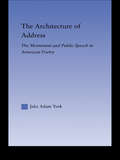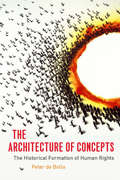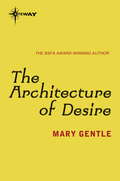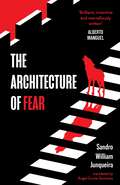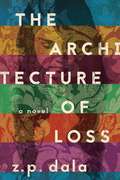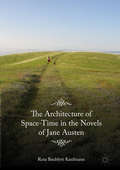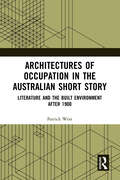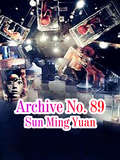- Table View
- List View
El archipiélago del perro
by Philippe ClaudelUn hecho extraordinario sacude la monótona existencia de una pequeña comunidad, obligándola a poner de manifiesto su auténtico carácter, su egoísmo y estrechez de miras. Una novela audaz y provocadora. Maestro en combinar elementos del género negro y la tragedia clásica, con una especial habilidad para crear suspense mediante una serie de detalles en principio intrascendentes, Philippe Claudel -autor de las aclamadas Almas grises y El informe de Brodeck- regresa con una historia plena de connotaciones filosóficas. El archipiélago del Perro dista mucho de ser un lugar paradisíaco. Situado en el Mediterráneo menos turístico, a unas decenas de millas de la costa africana, es un enclave aislado del mundo donde los habitantes entierran a sus muertos de pie por falta de espacio. Una tierra dura, famosa por sus fuentes de agua caliente y sus paisajes, y dominada por el Brau, un volcán que lleva milenios vomitando lava y escorias fértiles. La pesca y la agricultura son la forma de subsistencia de sus moradores, que sueñan con hacerse ricos con la probable construcción de un complejo termal financiado por un consorcio internacional. Sin embargo, un lunes de septiembre, el mar arroja a la orilla los cadáveres de tres jóvenes negros, un suceso que desencadena un agrio debate entre las personas con mando y poder en la isla, que discuten acaloradamente si dar una sepultura digna a los cuerpos u ocultarlos para evitar el escándalo. Una porfía que irá enconándose hasta romper el sosiego colectivo y transformar a esta pacífica gente en una turbamulta descontrolada capaz de provocar su propia aniquilación. Con un ritmo narrativo raudo y sostenido al servicio de una parábola sobre la crisis migratoria, Claudel ha escrito una novela que nos arranca de nuestra molicie y nos invita a rebelarnos ante la ignominia colectiva. Reseñas:«Una fábula negra única, una novela alegórica y misteriosa, llena de suspense.»Le Figaro «Claudel firma una tragedia griega que nos atrapa desde el prólogo [...] y alcanza su objetivo: dejar grabadas en nuestra retina imágenes de pesadilla.»Le Monde «En esta novela áspera e intrigante, cautivadora y enigmática al estilo de Almas grises y El informe de Brodeck, Philippe Claudel ofrece una fábula opresiva sobre la condición humana, así como una parábola sobre la caída.»La Croix «Una novela sombría y angustiante, que mezcla con talento una tragedia cotidiana con un entorno imaginario. [...] Un gran Philippe Claudel, imposible de olvidar.»Version Femina
The Architect (Frank Clevenger #6)
by Keith R. AblowWest Crosse is a stunningly brilliant, strikingly handsome architect with a love of ideal beauty and a commitment to achieving it at any cost. But the rich, powerful families who secretly engage him to design their homes don't know his dark side: Crosse can't stop at designing their dwellings. He needs to make their lives more perfect, too, even if it means a gut rehab of the family, even if the final design takes years to achieve--murdering an abusive spouse, a toxic lover, a predatory business partner or an unwanted child. As Crosse is about to embark on the master work or his creative life, the FBI puts Frank Clevenger on the case, and the ultimate cat and mouse game begins.
The Architect and the Castle of Glass
by Jade MereChasing his dream will send him into a dark and twisted nightmare. Tahki’s only goal is to become a world-famous architect, even if that means betraying his father’s wishes by abandoning his comfortable life for one of unpredictable danger. After Tahki blindly accepts what he thinks will be a dream job, his skills as an architect are put to the test as he is given the bizarre—and slightly unethical—task of turning a remote castle into a new-age machine for Prince Dyraien. The castle provides a challenge unlike any he’s had before, and Tahki finds the only way he’ll be able to succeed is to swallow his pride and work alongside Rye, a guarded young man who is quick to see the flaws in both Tahki and his work. Yet the looming deadline proves to be the least of Tahki’s troubles. When a horrifying creature begins to haunt him, Tahki turns to Rye for help. The more he learns about the history of the castle, the more terrifying the hauntings become. Even with Rye by his side, Tahki realizes achieving his dream might send him down a dark path from which he can’t return.
The Architect of Aeons (Count to the Eschaton Sequence, Book #4)
by John C. Wright[from inside flaps] "In the 112TH century, the Hyades Armada that has traveled thousands of lightyears to conquer Earth arrives at last--but the invasion unfolds in a manner none had foreseen, defying the expectations of both Menelaus Montrose and his immortal enemy, Ximen del Azarchel. Having set aside their differences and forged an uneasy alliance, the two men map a future on a scale beyond anything previously imagined. No longer concerned with the course of history across mere millennia, Montrose and Del Azarchel become the architects of aeons, bringing forth minds the size of planets as they steer the bizarre intellectual descendants of an extinct humanity. Driving their labors and their enmity is the hope of reunion with their shared lost love, the posthuman Princess Rania, self-appointed emissary of humanity to the unfathomably alien Dominion whose intent toward Earth she seeks to sway. But Rania's anticipated return with the Dominion's verdict in seventy thousand years is by no means certain, and if it comes to pass, it may upend everything Montrose and Del Azarchel seek to achieve."
The Architect of Flowers
by William LychackThe stories in William Lychack’s dazzling new collection, The Architect of Flowers, explore the dear and inevitable distance between people in loving relationships and find hope in dark situations. With tiny, precise details, Lychack observes the overlooked moments of everyday life—the small failings between parents and children, the long-held secrets in married life. A small-town policeman brings himself to shoot a family’s injured dog; an old woman secretly trains a crow to steal for her; a hybridizer’s wife discovers the perfect lie to bring her family magically together again. Lychack’s characters yearn to re-enchant the world, to turn the ordinary and profane into the sacred and beautiful again, to make beauty serve as an antidote to grief. From ghostwriter to ghost runners to ghosts in a chapel, these stories are extraordinary portraits of life’s tender humiliations as well as its sharp, rude jolts.
Architectonics of Poiēsis: Architectural Creation Reconsidered (Numanities - Arts and Humanities in Progress #29)
by Simina Anamaria LörinczThis volume explores the meaning of the architectural creative act, following the dynamics of the relationship between creator-creative act-creation and the way in which architecture is defined over time, as a creative act both material and symbolic. Two protagonists, Antonio Averlino (Filarete) and Christopher Alexander, are singled out under the guiding concepts of poíēsis and poeta faber. The book initiates a dialogue over time between their works and concepts, engaging two cultures, the Renaissance and the contemporary, symbolically chosen for their importance in redefining the profession through the prism of its relation to the architectural creative act. The core idea revolves around rediscovering the humanistic approach to architecture in and for the contemporary context, and using it in order to better understand architectural creation. This text appeals to students and researchers working in the history and theory of architecture, product, industrial design, and semiotics.
The Architect's Apprentice: A Novel
by Elif ShafakFrom the acclaimed author of The Bastard of Istanbul, a colorful, magical tale set during the height of the Ottoman EmpireIn her latest novel, Turkey's preeminent female writer spins an epic tale spanning nearly a century in the life of the Ottoman Empire. In 1540, twelve-year-old Jahan arrives in Istanbul. As an animal tamer in the sultan's menagerie, he looks after the exceptionally smart elephant Chota and befriends (and falls for) the sultan's beautiful daughter, Princess Mihrimah. A palace education leads Jahan to Mimar Sinan, the empire's chief architect, who takes Jahan under his wing as they construct (with Chota's help) some of the most magnificent buildings in history. Yet even as they build Sinan's triumphant masterpieces--the incredible Suleymaniye and Selimiye mosques--dangerous undercurrents begin to emerge, with jealousy erupting among Sinan's four apprentices.A memorable story of artistic freedom, creativity, and the clash between science and fundamentalism, Shafak's intricate novel brims with vibrant characters, intriguing adventure, and the lavish backdrop of the Ottoman court, where love and loyalty are no match for raw power.From the Hardcover edition.
Architects of Armageddon (The Kate Dawson Mysteries)
by John L. FlynnA San Francisco detective puts her life on the line to stop a doomsday cult from stoking the fires of Armageddon in this tense thriller.When Det. Kate Dawson is called to investigate a mass murder, she has no idea how grim and disturbing the situation truly is. The charismatic leader of End Times Ministries has ordered his followers to put their own children to death. Many of the followers willingly complied, believing it to be part of God&’s plan. As the Chosen Ones, they are destined to inherit the Earth. And the time has come for them to prepare for a holy war.With murderous fanatics hell-bent on starting Armageddon, Kate knows she must find the diabolical mastermind behind their horrifying crusade. But as San Francisco descends into violent chaos, and the Doomsday clock ticks closer to midnight, it may be too late to stop an apocalyptic plot already in motion.
Architects of Emortality
by Brian StablefordBrian Stableford launched an ambitious future history series with Inherit the Earth, to widespread praise. "Stableford has created in this novel a totally believable world, and wrapped it around a series of mysterious events, surprise revelations, double crosses, confused motivations, rumors, lies, plots, and counterplots. . . . Tightly controlled and suspenseful throughout," said Science Fiction Chronicle. Library Journal said, "The ethical questions posed by the prospect of conquering the aging process underscore this fast-paced SF adventure, adding depth to a story that will appeal to fans of high-tech SF and conspiracy theories." This future world is a complex society obsessed with the technology of life extension and on the brink of creating true immortals.Now, in Architects of Emortality, Stableford gives us a story set hundreds of years in the future, filled with people who can hope for 300-year lifespans and a fortunate few whose lives will be in the thousands of years. This society is on the edge of radical change, where people have the time to develop eccentric lifestyles and personal obsessions, a world sometimes reminiscent of the distant future of Michael Moorcock's Dancers at the End of Time series. And there has been a series of murders that threaten the future stability of the world, murders executed by bioengineered flowers. Police officers Watson and Holmes investigate, but the central figure quickly becomes the amateur detective Oscar Wilde, a student of history who has taken on the persona of his namesake. And the question is not so much who the murderer is, but how and why.Filled with memorable characters and powerful and striking images of the richly altered world of the future, Architects of Emortality is a satisfying and complete story that also adds depth and detail to the evolving series.At the Publisher's request, this title is being sold without Digital Rights Management Software (DRM) applied.
Architects of Infinity (Star Trek: Voyager)
by Kirsten BeyerAn original novel set in the universe of Star Trek: Voyager, from the New York Times bestselling author!As the Federation Starship Voyager continues to lead the Full Circle Fleet in its exploration of the Delta Quadrant, Admiral Kathryn Janeway remains concerned about the Krenim Imperium and its ability to rewrite time to suit its whims. At Captain Chakotay's suggestion, however, she orders the fleet to focus its attention on a unique planet in a binary system, where a new element has been discovered. Several biospheres exist on this otherwise uninhabitable world, each containing different atmospheres and features that argue other sentient beings once resided on the surface. Janeway hopes that digging into an old-fashioned scientific mystery will lift the crews' morale, but she soon realizes that the secrets buried on this world may be part of a much larger puzzle—one that points to the existence of a species whose power to reshape the galaxy might dwarf that of the Krenim. Meanwhile, Lieutenants Nancy Conlon and Harry Kim continue to struggle with the choices related to Conlon’s degenerative condition. Full Circle’s medical staff discovers a potential solution, but complications will force a fellow officer to confront her people’s troubled past and her own future in ways she never imagined… ™, ®, & © 2018 CBS Studios, Inc. STAR TREK and related marks and logos are trademarks of CBS Studios, Inc. All Rights Reserved.
Architects of Memory (The Memory War #1)
by Karen OsborneMillions died after the first contact. An alien weapon holds the key to redemption—or annihilation. Experience Karen Osborne's unforgettable science fiction debut, Architects of Memory.SyFY Wire SFF Reads to pick up in SeptemberTerminally ill salvage pilot Ash Jackson lost everything in the war with the alien Vai, but she'll be damned if she loses her future. Her plan: to buy, beg, or lie her way out of corporate indenture and find a cure. When her crew salvages a genocidal weapon from a ravaged starship above a dead colony, Ash uncovers a conspiracy of corporate intrigue and betrayal that threatens to turn her into a living weapon.At the Publisher's request, this title is being sold without Digital Rights Management Software (DRM) applied.
Architects of the Self: George Eliot, D. H. Lawrence, and E. M. Forster
by Calvin BedientThis title is part of UC Press's Voices Revived program, which commemorates University of California Press’s mission to seek out and cultivate the brightest minds and give them voice, reach, and impact. Drawing on a backlist dating to 1893, Voices Revived makes high-quality, peer-reviewed scholarship accessible once again using print-on-demand technology. This title was originally published in 1972.
Architectural Space and the Imagination: Houses in Literature and Art from Classical to Contemporary
by Jane Griffiths Adam HannaThis book sheds light on the intimate relationship between built space and the mind, exploring the ways in which architecture inhabits and shapes both the memory and the imagination. Examining the role of the house, a recurrent, even haunting, image in art and literature from classical times to the present day, it includes new work by both leading scholars and early career academics, providing fresh insights into the spiritual, social, and imaginative significances of built space. Further, it reveals how engagement with both real and imagined architectural structures has long been a way of understanding the intangible workings of the mind itself.
Architecture and Modern Literature
by David SpurrArchitecture and Modern Literature explores the representation and interpretation of architectural space in modern literature from the early nineteenth century to the present, with the aim of showing how literary production and architectural construction are related as cultural forms in the historical context of modernity. In addressing this subject, it also examines the larger questions of the relation between literature and architecture and the extent to which these two arts define one another in the social and philosophical contexts of modernity. Architecture and Modern Literature will serve as a foundational introduction to the emerging interdisciplinary study of architecture and literature. David Spurr addresses a broad range of material, including literary, critical, and philosophical works in English, French, and German, and proposes a new historical and theoretical overview of this area, in which modern forms of "meaning" in architecture and literature are related to the discourses of being, dwelling, and homelessness.
Architecture and the Novel under the Italian Fascist Regime
by Francesca Billiani Laura PennacchiettiArchitecture and the Novel under the Italian Fascist Regime discusses the relationship between the novel and architecture during the Fascist period in Italy (1922-1943). By looking at two profoundly diverse aesthetic phenomena within the context of the creation of a Fascist State art, Billiani and Pennacchietti argue that an effort of construction, or reconstruction, was the main driving force behind both projects: the advocated “revolution” of the novel form (realism) and that of architecture (rationalism). The book is divided into seven chapters, which in turn analyze the interconnections between the novel and architecture in theory and in practice. The first six chapters cover debates on State art, on the novel and on architecture, as well as their historical development and their unfolding in key journals of the period. The last chapter offers a detailed analysis of some important novels and buildings, which have in practice realized some of the key principles articulated in the theoretical disputes.
Architecture for Teens: A Beginner's Book for Aspiring Architects
by Danielle WillkensA practical introduction to architecture for aspiring teen architectsArchitecture is a fascinating, diverse field that blends technology, creativity, engineering, and even psychology. Discover the possibilities with this in-depth choice in architecture books for teens. Delve into the world of architecture, learn about recent innovations in sustainability and inclusivity, and uncover the details behind real architectural projects.Explore an overview of architectural movements and designers from prehistory to modern-day, and check out inspiring interviews with working professionals. With tons of practical advice for pursuing a career, you'll find out how you can become an architect and help build an environmentally responsible world from the ground up!Go beyond other architecture books for teens with:Architecture essentials—Get to know the five basic elements of architecture: structure, program, economics, aesthetics, and region.Creative career options—Learn what it means to work in residential or industrial architecture, specialize in historic preservation, create landscapes, innovate in urban planning, and more.Real-world examples—Go behind the scenes on real architectural projects with colorful illustrations, breakdowns of the design process, and thoughtful examinations of their impact.This book makes an excellent choice for Christmas gifts for teens, offering a unique blend of education and inspiration. It's also perfect as a stocking stuffer for teens who are curious about the world of architecture!
The Architecture of Address: The Monument and Public Speech in American Poetry (Literary Criticism and Cultural Theory)
by Jake Adam YorkThe Architecture of Address traces the evolution of an American species of lyric capable of public pronouncement without polemic. Beginning with Whitman, Jake Adam York seeks to describe a kind of poem wherein the most ambitious poets--including Hart Crane and Robert Lowell--occupy and reconstruct important public spaces. This study argues that American poets become civic actors when their poems imagine and reconstruct the conceptual architecture of the monument.
The Architecture of Concepts: The Historical Formation of Human Rights
by Peter de BollaThe Architecture of Concepts proposes a radically new way of understanding the history of ideas. Taking as its example human rights, it develops a distinctive kind of conceptual analysis that enables us to see with precision how the concept of human rights was formed in the eighteenth century.The first chapter outlines an innovative account of concepts as cultural entities. The second develops an original methodology for recovering the historical formation of the concept of human rights based on data extracted from digital archives. This enables us to track the construction of conceptual architectures over time.Having established the architecture of the concept of human rights, the book then examines two key moments in its historical formation: the First Continental Congress in 1775 and the publication of Tom Paine’s Rights of Man in 1792. Arguing that we have yet to fully understand or appreciate the consequences of the eighteenth-century invention of the concept “rights of man,” the final chapter addresses our problematic contemporary attempts to leverage human rights as the most efficacious way of achieving universal equality.
The Architecture of Desire
by Mary GentleMercenaries in lace and steel roam the countryside and the heads of criminals are impaled on London Bridge. The characters' relationships are played out in the shadow of the hangman's rope. Sequel to Rats and Gargoyles.
The Architecture of Desire
by Mary GentleMercenaries in lace and steel roam the countryside and the heads of criminals are impaled on London Bridge. The characters' relationships are played out in the shadow of the hangman's rope. Sequel to Rats and Gargoyles.
The Architecture of Fear
by Sandro William JunqueiraA powerful, exhilarating and unsettling tale about a dystopian city which explores the dynamics of power and oppression, and the silent strength of revolt.
The Architecture of Loss: A Novel
by Z. P. DalaA novel of forgiveness and reconciliation that shines light on the dark underbelly of South Africa’s fight for freedom and democracy. Estranged at the age of six from her mother, who sent her away from her hometown of Brighton in rural Zululand, brilliant architect Afroze Bhana has carved out an impressive life for herself in Cape Town. But when she receives word that her aging mother is desperately ill, she finds herself compelled to return to her place of birth to find answers about her painful childhood. Afroze arrives in Brighton to find that her mother, Sylvie—who was a doctor and a fierce activist during the dark days of the anti-apartheid struggle—is a shadow of her formidable self, but Sylvie has still retained her sarcasm and anger toward the daughter that she sent away. Somehow, Sylvie cannot draw her daughter close, even facing the looming threat of her own mortality. She remains in the cottage of Afroze’s childhood, frozen in a world where she surrounds herself with luxury and garish indulgences, cared for by the fiercely protective Halaima, a Malawian refugee. Especially painful for Afroze is the love and affection that Sylvie showers on Bibi, Halaima’s pampered and precocious daughter—love which she could never give her own daughter. A moving novel about the complexities of family ties, The Architecture of Loss beautifully explores the ways in which the anti-apartheid struggle—a struggle in which the roles of women have been largely overlooked—irrevocably damaged many of its unsung heroes.
The Architecture of Space-Time in the Novels of Jane Austen
by Ruta Baublyté KaufmannThis book argues that there are recurrent spatiotemporal patterns and structures in six Jane Austen novels which constitute a source of enduring, if unconscious, pleasure. More precisely, the book contends that there are overlapping natural and cultural cycles which co-exist in a constantly transmuting space-time and which are counterpointed with the linearity of pivotal events that drive the plot forwards. This work examines the psychological relations to these space-time patterns of the characters, principally the heroines, focusing on the transformations of their emotional states which prompt linear leaps.
Architectures of Occupation in the Australian Short Story: Literature and the Built Environment after 1900
by Patrick WestPatrick West’s Architectures of Occupation in the Australian Short Story cultivates the potential for literary representations of architectural space to contribute to the development of a contemporary politics of Australian post-colonialism.West argues that the predominance of tropes of place within cultural and critical expressions of Australian post-colonialism should be re-balanced through attention to spatial strategies of anti-colonial power. To elaborate the raw material of such strategies, West develops interdisciplinary close readings of keynote stories within three female-authored, pan-twentieth century, Australian short-story collections: Bush Studies by Barbara Baynton (1902); Kiss on the Lips and Other Stories by Katharine Susannah Prichard (1932); and White Turtle: A Collection of Short Stories by Merlinda Bobis (1999). The capacity of the short-story form to prompt creative and politically germinal engagements with species of space associated with architecture and buildings is underscored. Relatedly, West argues that the recent resurgence of binary thought—on local, national, and international scales—occasions an approach to the short-story collections shaped by binary relationships like a dichotomy of inside and outside. Concluding his argument, West connects the literary and architectural critiques of the story collections to the wicked problem, linked to ongoing colonial violences, of improving Australian Indigenous housing outcomes.Innovative and interdisciplinary, this book will be of interest to scholars and students of Literary, Architectural, and Postcolonial Studies. .
Archive No. 89: Volume 1 (Volume 1 #1)
by Sun MingYuanA woman's head soaked in formalin was accidentally found by Tang Doberman, the head of the police officer. As a police officer, he intended to investigate the matter, and as the police officers continued to obstruct him, he fell deeper and deeper into the darkness was spreading. How could he reverse the shocking murder caused by a head? [Previous Chapter] [Table of Contents] [Next Chapter] Reader: 189081841
